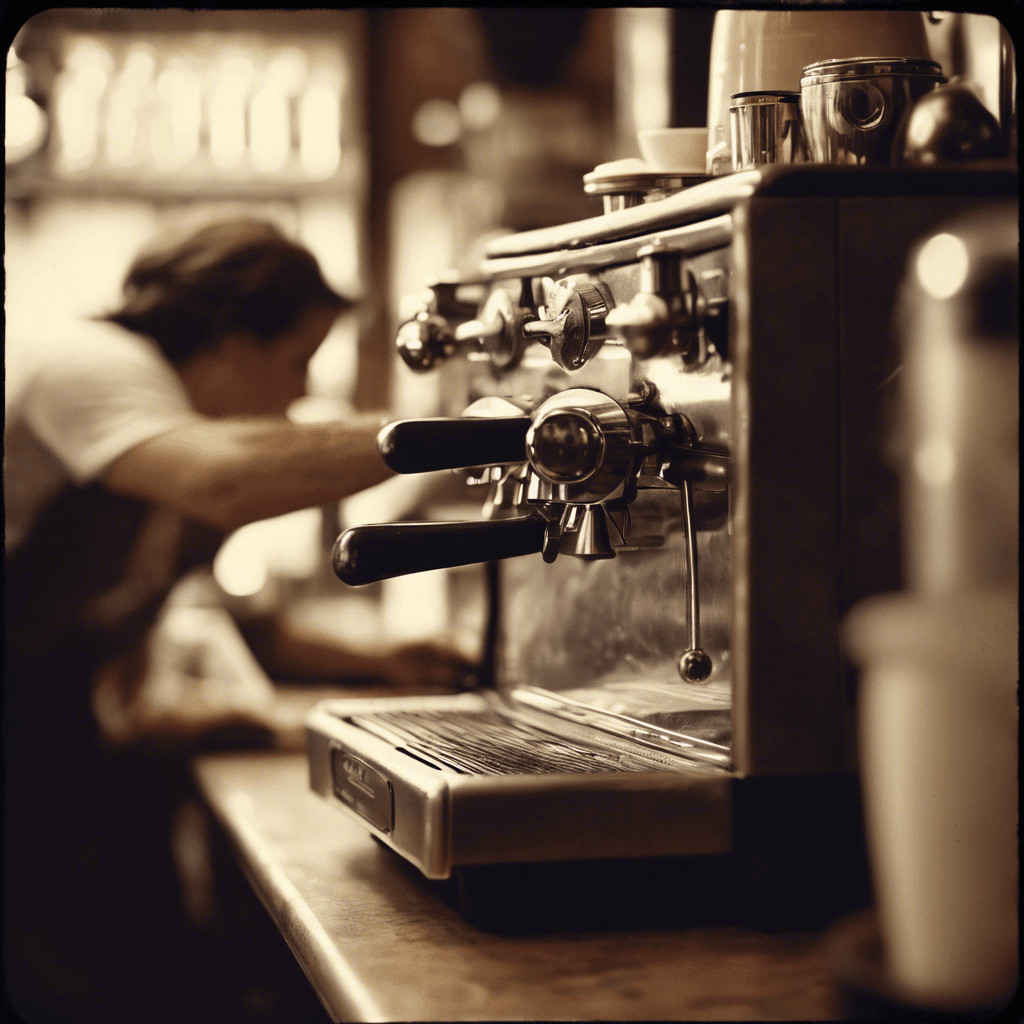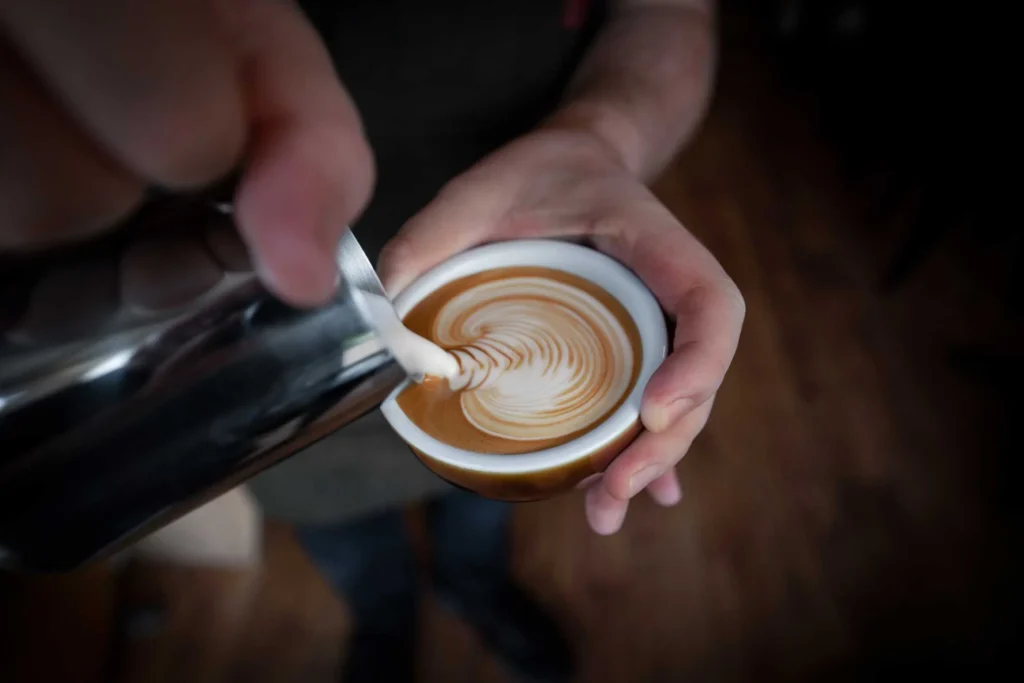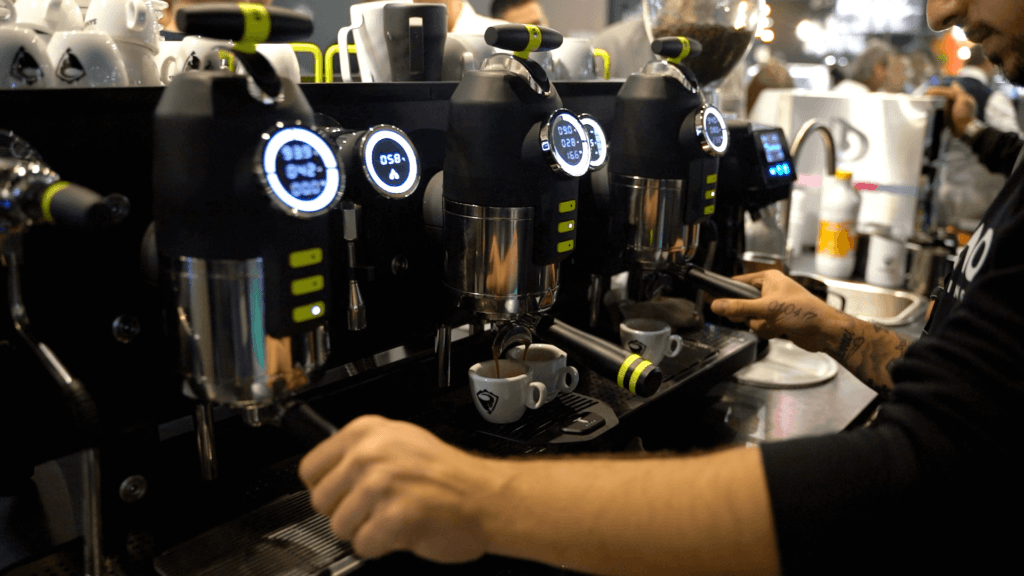The morning sun streams through Fraser’s café windows as he crafts my flat white, his movements telling a story that began decades ago. Like many coffee tales, this one starts with a quest for perfection.
The origin of the flat white sits close to my heart, not just as a coffee writer but as someone who has spent countless hours in the coffee shops of Wellington and Melbourne, tracking down its story. Each cup I taste adds another layer to this fascinating history.
A Tale Written in Microfoam

You see how the milk catches the light?” asks Fraser McInnes, head trainer at Wellington’s Coffee Academy. After 25 years behind the machine, his expertise shows in every pour. “The origin of the flat white coffee isn’t just about dates and places – it’s about understanding what people were trying to create.”
According to the Specialty Coffee Association Chronicle (2015), the term ‘Flat White’ first appeared on café menus in Sydney during the mid-1980s. Alan Preston, founder of Sydney’s Moors Espresso Bar, is often credited with being the first to formally list it on his menu in 1985. However, as coffee historian Emma Markland-Webster notes in her 2014 study published in Food Culture & Society, ‘The evolution of the flat white was a collaborative effort across both Australia and New Zealand, representing a period of significant coffee innovation in both countries.
The Science Behind the Silk
James Hoffmann, World Barista Champion and author of “The World Atlas of Coffee,” explains what sets this drink apart from other espresso-based drinks:
“What makes a white is a coffee unlike any other is the precise orchestration of elements,” he demonstrates, carefully controlling his shot timing. Unlike a traditional latte or cappuccino, we’re looking for that perfect harmony of textured milk and espresso.
The technical precision involves:
- A meticulously timed double shot of espresso
- Precisely steamed milk, swirling like liquid silk
- The thinnest possible layer of foam
- That characteristic velvety texture that’s become its signature

From Contested Origins to Global Icon
The journey from its disputed origin in Australia to the United States and beyond reads like a coffee-fueled fairytale. “It’s fascinating how a drink that sparked such heated debates about its birthplace has united coffee lovers worldwide,” notes Emma Markland-Webster, former New Zealand Barista Champion and coffee historian.
Walking through Wellington’s Cuba Street, I meet David Mackay, one of the original baristas from DKD Café (1988-2000). “Back then,” he recalls, adjusting his well-worn apron, “we were experimenting with different combinations of espresso and steamed milk. We didn’t know we were making history – we were just trying to make something special.”
The Modern Masters
At Melbourne’s St. Ali, where modern coffee culture continues to evolve, I watch award-winning barista Matt Perger showing his approach to the classic drink. His dedication to craft mirrors the drink’s origins, even as he pushes boundaries with new techniques.
“Understanding where this drink comes from helps us respect its fundamentals while allowing it to evolve,” shares Perger, measuring his extraction with scientific precision. He shows the pour, explaining how temperature, pressure, and timing interact to create the perfect cup.

A Living Legacy
As my journey exploring the origin of the flat white draws to a close, I find myself back at Fraser’s café. The morning rush has subsided, and he’s cleaning his machine with the same care he puts into each cup.
“Every Flat White tells our story,” he reflects, “from the first experiments in antipodean cafés to the millions served worldwide today. But you know what makes it special?” He slides a perfectly crafted cup across the counter. “It’s still made by hand, one cup at a time.”
Taking a sip, I taste more than just coffee. I taste decades of craftsmanship, passionate debates and the endless pursuit of perfection.





